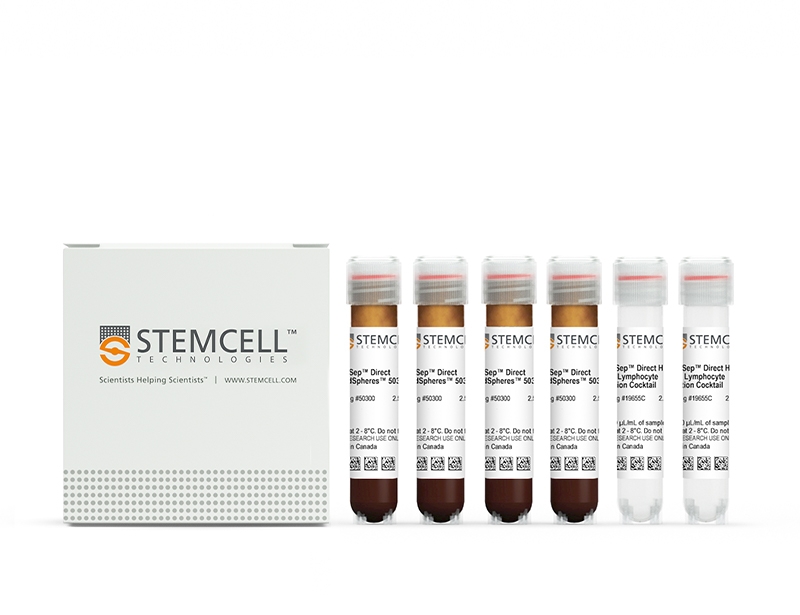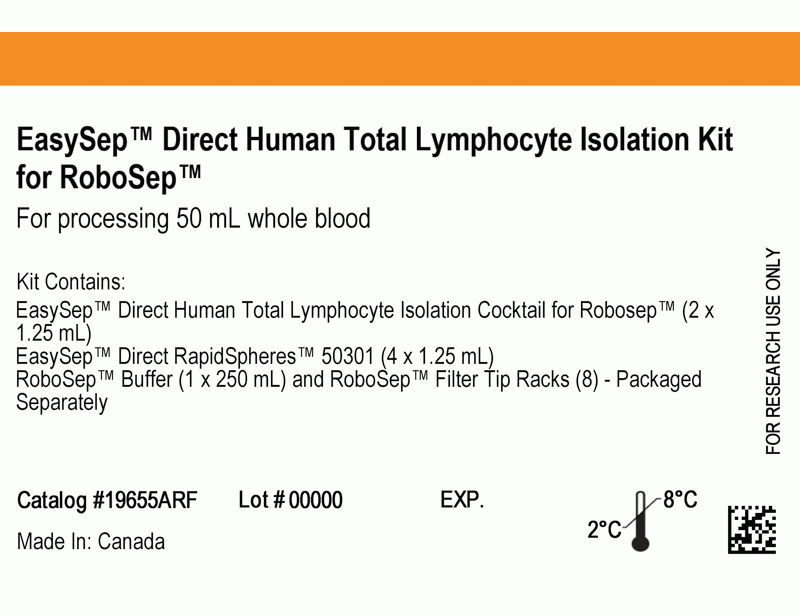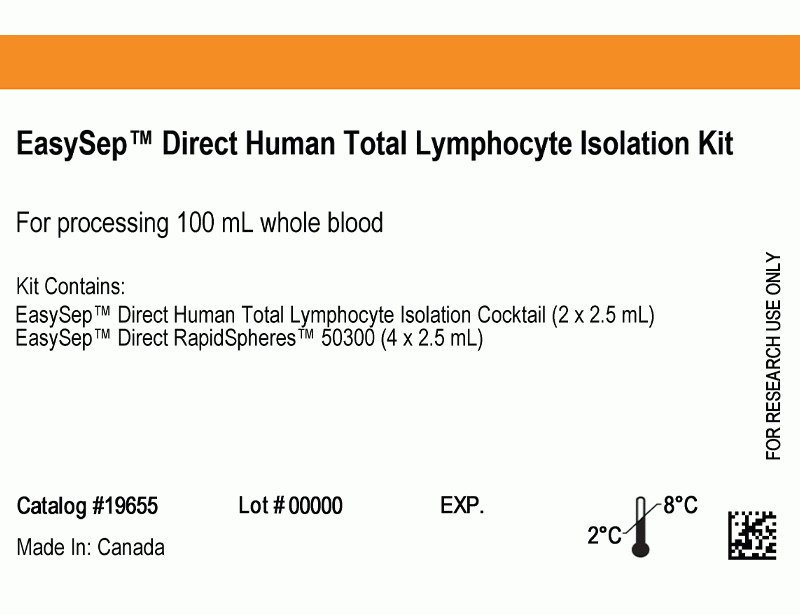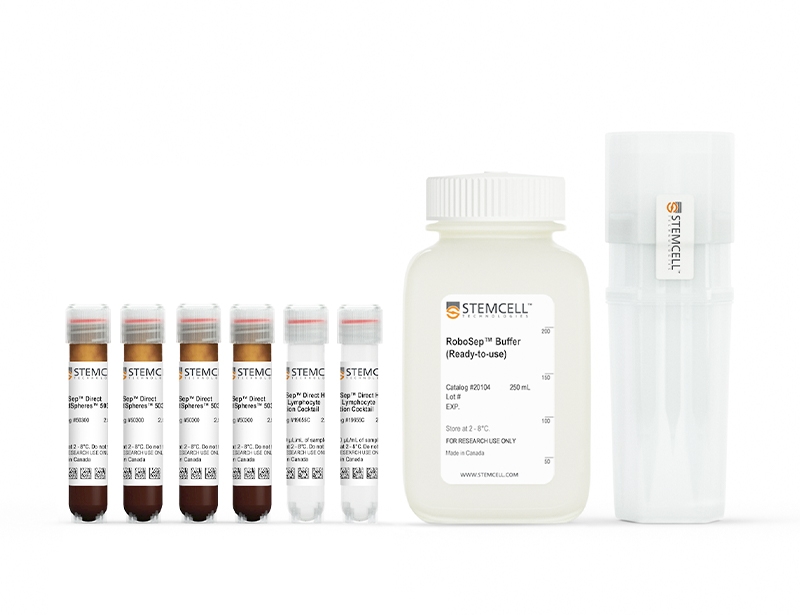概要
The EasySep™ Direct Human Total Lymphocyte Isolation Kit isolates highly purified lymphocytes directly from human whole blood by immunomagnetic negative selection. Isolated cells are untouched and available for direct use in flow cytometry, culture, DNA/RNA extraction or other downstream applications.
数据及文献
Publications (2)
Scientific reports 2020 jan
Profiling of human lymphocytes reveals a specific network of protein kinases modulated by endurance training status.
K. Alack et al.
Abstract
To date, the effects of endurance exercise training on lymphocyte physiology at the kinome level are largely unknown. Therefore, the present study used a highly sensitive peptide-based kinase activity profiling approach to investigate if the basal activity of tyrosine (Tyr) and serine/threonine (Ser/Thr) kinases of human lymphocytes is affected by the aerobic endurance training status. Results revealed that the activity of various tyrosine kinases of the FGFR family and ZAP70 was increased, whereas the activity of multiple Ser/Thr kinases such as IKK$\alpha$, CaMK4, PKA$\alpha$, PKC$\alpha$+$\delta$ (among others) was decreased in lymphocytes of endurance trained athletes (ET). Moreover, functional associations between several differentially regulated kinases in ET-derived lymphocytes were demonstrated by phylogenetic mapping and network analysis. Especially, Ser/Thr kinases of the AGC-kinase (protein kinase A, G, and C) family represent exercise-sensitive key components within the lymphocytes kinase network that may mediate the long-term effects of endurance training. Furthermore, KEGG (Kyoto Encyclopedia of Genes and Genomes) and Reactome pathway analysis indicate that Ras as well as intracellular signaling by second messengers were found to be enriched in the ET individuals. Overall, our data suggest that endurance exercise training improves the adaptive immune competence by modulating the activity of multiple protein kinases in human lymphocytes.
NPJ precision oncology 2019
Liquid biopsy for minimal residual disease detection in leukemia using a portable blast cell biochip.
B. L. Khoo et al.
Abstract
Long-term management for leukemia is challenging due to the painful and invasive procedure of bone marrow (BM) biopsy. At present, non-invasive liquid (blood) biopsy is not utilized for leukemia, due to lower counts of leukemia blast cells in the blood. Here, we described a robust system for the simultaneous detection and enrichment of rare blast cells. Enrichment of blast cells was achieved from blood with a one-step microfluidic blast cell biochip (BCB) sorting system, without specific targeting of proteins by antibodies. Non-target cells encountered a differential net force as compared to stiffer blast cells and were removed. The efficiency of the BCB promotes high detection sensitivity (1 in 106 cells) even from patients with minimal residual disease. The procedure was validated using actual blast cells from patients with various types of leukemia. Outcomes were compared to current evaluation standards, such as flow cytometry, using BM aspirates. Blast cell detection efficiency was higher in 55.6{\%} of the patients using the BCB as compared to flow cytometry, despite the lower concentrations of blast cells in liquid biopsy. These studies promote early-stage detection and routine monitoring for minimal residual disease in patients.
View All Publications


 网站首页
网站首页





